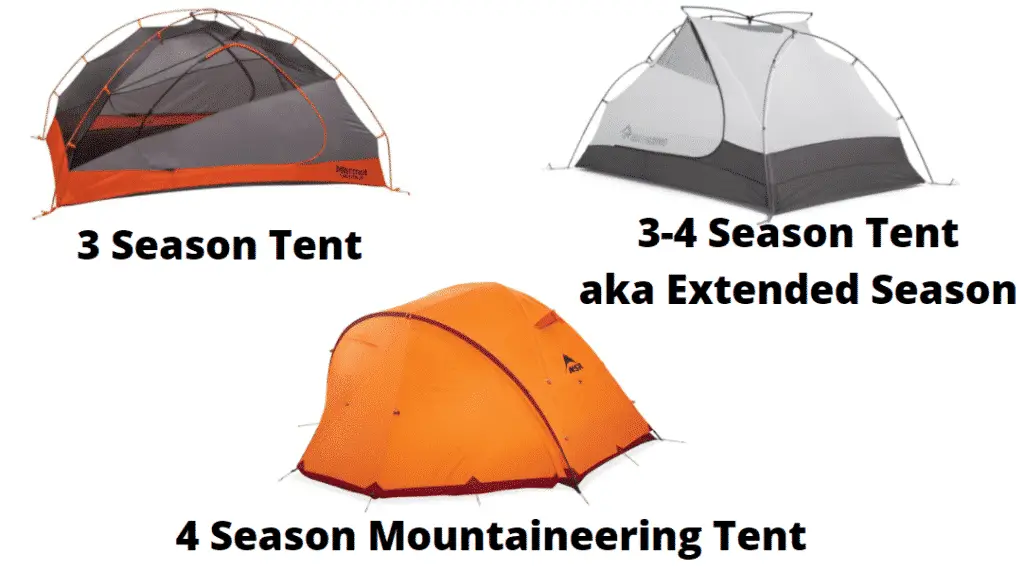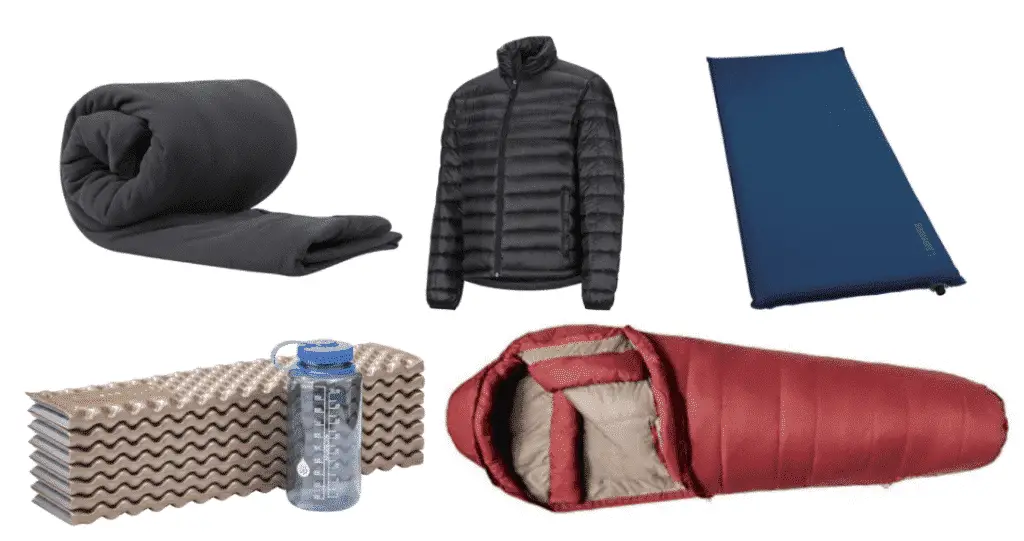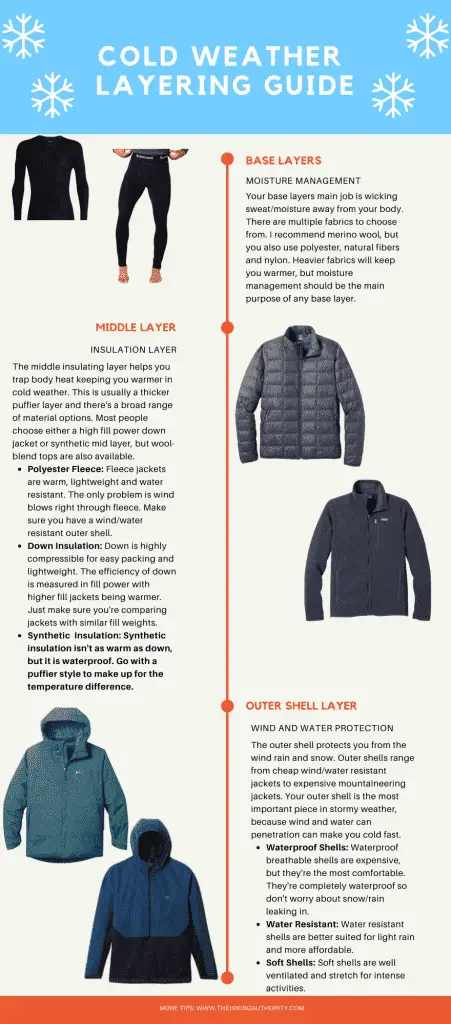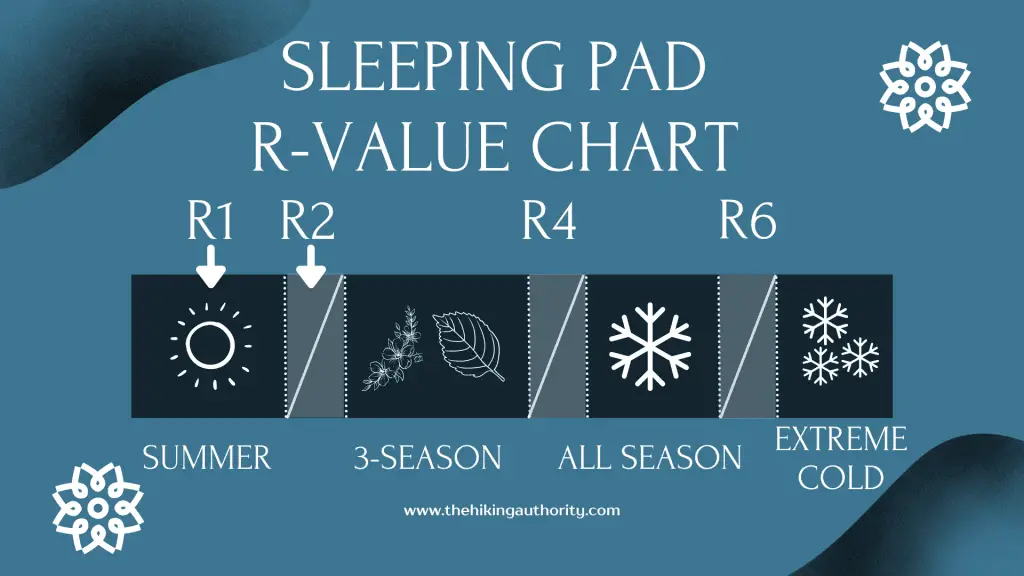You wouldn’t think that thin fabric tent walls would offer much insulation from the cold, but anybody that’s ever went camping in the winter knows that there’s an immediate temperature jump when you step into your tent. It might seem crazy, but is it really warmer inside a tent or is it all in your head? Will a tent be able to protect you from the cold weather outside?
Is it warmer inside a tent? Yes, the inside of your tent will be warmer than the outside air, but how much warmer the tent will be depends on its design. Most people use 3-Season tents and they won’t offer much warmth (5°F Max). Your sleeping bag/pad do most of the work, but there are tents designed for winter use. You need to buy a 4-Season tent or insulated expedition tent if you plan on camping in the winter. Four season tents are designed to trap heat and will be 10°-15° Fahrenheit warmer than the outside air and insulated/expedition tents can be 25°F warmer inside.
You can get by in cold weather (with light snow) in a 3-Season tent if you have a high R-Value insulated sleeping pad and sleeping bag designed for extreme temperatures, but a dedicated winter tent is well worth the money. In the rest of this post I’ll explain the differences between 3-Season tents and winter tents and give you some tips to stay warmer inside your tent.
Table Of Contents
Is It Really Warmer Inside A Tent?

If you’ve ever gone camping in the cold, you know that it will be a little bit warmer inside your tent. How much warmer will depend on the tent design, but every tent will offer a little bit of warmth. Plus tents keep you out of the wind, which will make a huge difference in perceived temperature.
Tents don’t have specific temperature ratings, but you can still get an idea of how they’ll perform by looking at the seasonality rating. There are 3 different seasonality ratings and then you also have heavy duty mountaineering/expedition tents. I’ll give you a brief overview of each tent style.
- 3-Season Tents: A 3-Season tent is designed for spring, summer, and fall use, but some people use them in the winter. You just have to make sure the tent has strong aluminum or carbon fiber poles and you bring sufficient insulation to stay comfortable in the cold. Expect a 5°F temperature difference in a 3-Season tent. You need to be careful in heavy snow and there will definitely be a windy drafts blowing through, but it should be manageable in reasonable temperatures.
- 4-Season Tents: Most 4 season tents have poor ventilation to trap heat, block drafts, and use rounded designs to shed snow, but you won’t be able to use them in warm weather(it will be hot). There will be about a 24°F temperature difference in a 4-Season tent. They stand tough in 30 mph winds and heavy snowfall since they’re designed for mountaineering use in extreme weather above the treeline. These are overkill for the vast majority of people so make sure it’s necessary before dropping $700+. The Marmot Thor 2p tent and MSR Expedition tent are perfect examples.
- 3-4 Season Tents (aka Extended Season): Most people that camp in the winter will want a 3-4 season (aka extended season) tent with a 14°F temperature difference. They block most of the wind, trap heat, and you will save $200-300 and they have added ventilation making them more comfortable in the spring/fall. REI Co-ops ASL 2 tent is by far the most affordable extended season tent, but you may be able to find cheaper used options on eBay.
The vast majority of people don’t a 4-Season or 3-4 Season tent. It’s hard to justify spending well over $500 on a tent that you would use a small handful of times per year. I recommend buying a high quality 3-Season tent and spending the extra money on low temperature sleeping bag, insulated sleeping pad, and sleeping bag liner. That will get you 90% of the way there and then you need to focus on wearing multiple layers of warm clothing.
Using A 3-Season Tent In The Winter

You shouldn’t have any trouble using a typical 3-Season tent in the winter, but make sure you’re using a tent with a sturdy design. Most high quality tents use lightweight aluminum poles, but some older used tents used carbon fiber. Carbon fiber poles are technically stronger, but they have serious durability issues. Aluminum poles may bend under a heavy load, but carbon fiber has catastrophic breaks.
There won’t be much of an issue with light snowfall, but you need to be careful in heavy snow. Brush most of the snow off throughout the day and avoid going out when they’re predicting heavy snowfall. The only other thing you need to worry about is wind blowing through your tent. This usually isn’t a huge problem, but you may want to build a wind break if you’re camping above the treeline.
I won’t bother going over extended season and 4 season tents. Those are designed for extreme weather conditions so there’s not much to add. You should still try to wipe off heavy snow loads to protect the tent, but almost everything else will be the same.
Can Your Tent Be Enough To Keep You Warm?
Your tent doesn’t trap enough heat to keep you warm on its own in cold weather. You will also need to wear warm clothes, and use a sleeping bag/pad at night. Hanging out in the tent might keep you a little bit warmer and cut off the wind chill, but body heat alone won’t be enough to heat up a tent.
You’ll need to either wear insulating layers, climb in your sleeping bag, or use an alternative heat source like a propane Mr Heater to heat up the surrounding air. A campfire and multi-layer clothing system will keep you warm outside the tent.
Will Body Heat Warm Up A Tent?
At rest your body can produce up to 120 watts of heat per hour. That’s about 12.5% of the heat of a typical heater so it won’t make a huge difference, but it will give off a little bit of heat. A 3-Season tent won’t trap much of that heat, but an insulated 4-Season tent can trap most of it.
This allows the air inside to work as an extra insulation layer and can increase the temperature 5°-15 ° depending on the tent design. That’s assuming you’re not tucked inside a sleeping bag. Once you settle in at night the sleeping bag will trap all of your body heat so the tent won’t get much warmer.
Consider Bringing A Portable Camping Heater
A small portable camping heater like the MR Buddy will make a huge difference to the inside temperature in your tent. You don’t have to worry about carbon monoxide and it has an auto-shutoff if you accidentally tip it over, but you still need to be careful around flammable gear.
I set my Mr Buddy on a regular sized cookie sheet to get it up off my tent floor and run it while I’m hanging out in the tent during the day. It can run for 3-6 hours depending on the temperature setting, but I wouldn’t try to run it overnight. The potential fire hazard isn’t worth the added risk since you should be comfortable in your sleeping bag anyway.
Just make sure your sleeping bag has a temperature rating 15 degrees lower than the expected nighttime lows and you’re using a high R-Value sleeping pad (R-Value 5 for winter use). I always carry a sleeping bag liner as well to protect my sleeping bag and increase the temperature rating.
A Tent Isn’t Supposed To Keep You Warm

Your tent is one of the last things you should rely on to keep you warm in the winter. A sturdy 4-Season or insulated tent will help a little bit in freezing temperatures, but you should focus your money on the gear that matters most.
Focus most of your attention on wearing extra layers, the sleeping pads R-Value, sleeping bags temperature rating and you can add a sleeping bag liner to improve your bags temperature rating. Let’s start off with a brief breakdown of how each of these items affects your warmth and go over them in depth down below.
- Layering Clothing: Wearing multiple layers of clothes is your first step in battling cold weather. Layering clothes will help both inside and outside your tent. As a camper you probably know about layering systems for your clothes, but l’ll give you a quick overview. You have a light base layer that wicks sweat away from your body, mid fluffy layer to provide insulation, and waterproof outer shell to protect against the elements. It’s rarely warmer to sleep naked in your sleeping bag so make sure you have a set of warm sleeping clothes as well.
- Sleeping Pad: Your sleeping pad keeps your sleeping bag up off the cold hard ground. Look for a 5+ R-Value sleeping pad for winter use. I recommend using both a foam and inflatable sleeping (regular or self-inflating) pad in the winter. I carry a Therm-a-Rest ZLite Foam Pad (1.7 R-Value) and Neo-Air Xlite Inflatable Pad (4.2 R-Value) in the winter. The combined 5.9 R-Value of insulation is plenty for extreme temperatures.
- Sleeping Bag Liner: Sleeping bag liners are mostly used to protect your bag, but they add a surprising amount of warmth to your sleeping bag. Even a cheap sleeping bag liner like this Coleman Liner adds 15° of warmth to your bag. Premium liners like the Sea To Summit Reactor Extreme Liner add 25°F and Reactor Fleece Insulated Liner adds 32°F of warmth to your bag.
- Sleeping Bag: Your sleeping bag is the most important piece of insulated gear in cold weather. Buy a sleeping bag with a temperature rating that’s 15°F colder than the lowest predicted temperatures. This gives you a little bit of wiggle room for temperature variances, and adds additional warmth to the weak spots in your bag. The coldest points in a sleeping bag are your head and feet so make sure you sleeping in warm merino wool socks (Smartwool Socks) and keep a winter hat on at night.
Layer Clothing In Your Tent

Planning your clothing for a winter camping trip doesn’t have to be hard. Just follow a simple layering system and ditch/add layers as needed. Here’s how most campers layer their clothes in the winter.
- Base Layer: Start off with a warm base layer that wicks sweat away from your body while keeping you warm. Regular cotton thermal long johns will work, but I recommend going with long sleeve merino wool base layer. Go with a long sleeve merino wool thermal shirt and long johns. I wear a Smartwool Baselayer Crewneck Shirt and their merino wool bottoms, but they can be expensive. Icebreaker base layers are usually a little bit cheaper and similar quality. If you can’t afford the high price tag I recommend looking at your local thrift stores for merino wool sweaters. You can usually find a few in the $5 range. You might get lucky and find a down midlayer and outer shell as well.
- Mid Insulated Layer: The fluffy mid layer does most of the work keeping you warm. Look for a fluffy down or synthetic fill midweight jacket to wear as your mid layer. Down is usually warmer than synthetic fills of the same weight, but be careful when comparing two products. A higher fill power down jacket might not always be warmer if there’s less down insulation in the jacket. Look at the downs fill power and then compare the overall weight of the jacket. A fluffy 500 fill power jacket may be warmer than a lightly filled 650 fill power jacket.
- Outer Shell Layer: The outer shell is what protects you from wind and water. Make sure your outer shell is water resistant so it won’t get wet in the snow/rain. I rarely wear my outer shell, but you never know when you’ll need it. I toss it on whenever it starts snowing or the wind picks up to protect my down jacket.
Sleeping Pad

Your sleeping pad is the first layer of protection against the cold. It goes underneath your sleeping pad giving you added comfort and protecting your body from the cold ground. A sleeping bag won’t be able to keep your back warm since your body compresses the fill down so you definitely need to use a sleeping pad in the cold.
I recommend combining both a foam sleeping pad and some type of inflatable pad. Pairing them up will increase overall insulation and give you added comfort from the hard ground. Plus you won’t have to spend as much money on an a high R-Value sleeping pad.
I use a cheap Therm-a-Rest Zlite Foam pad and Neoair Xlite sleeping pad for a combined 5.9 R-Value. Any combination of pads will work in the winter as long as the total R-Value is over 5. You can use a winter sleeping pad like the Therm-a-Rest Mondoking (8 R-Value) or NeoAir Xtherm (6.9 R-Value), but they will be heavier for non winter use. I like to be able to use my gear all year round so stacking foam/inflatable pads makes sense for me.
Cold Weather Sleeping Bags

The sleeping bag is by far the most important piece of your sleep system. It’s the main source of insulation while sleeping at night. Make sure you compare the sleeping bag temperature ratings to the expected nighttime temperatures you will be dealing with.
I recommend going with a sleeping bag that’s rated at least 15 degrees colder than the expected nighttime temperatures. Look for mummy style bags with hoods to block wind from entering your bag and keep your head warm. Both down and synthetic fills offer the same amount of warmth, but down bags will use more compressible lightweight designs.
You don’t want to wake up in the middle of the night freezing cold and need to put on additional layers. The head and feet areas are by far the weakest point in a sleeping bag. Make sure you wear thick insulated merino wool socks to keep your feet warm and wear a winter hat on the top of your head to prevent heat loss.
You should also wear a base layer like a set of long johns or sweatpants to keep your body warm. Putting on a mid layer insulated jacket might be necessary if the temperature drops below your bags temperature rating.
A sleeping bag liner will further pad your bags temperature rating. Coleman sleeping bag liners are cheap and 15°F to your bags temperature rating. The Sea To Summit Reactor (adds 25°F) and Reactor Thermal Insulated Liner (adds 32°F) for even more versatility.




